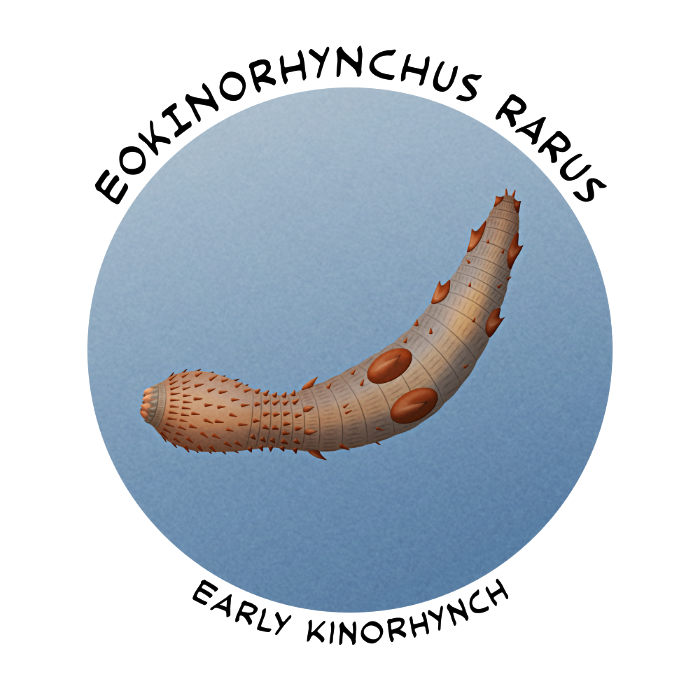After the slightly unfortunately-shaped priapulids, let’s move on to something much safer-for-work: dragons!
More accurately, kinorhynchs, tiny spiky scalidophoran worms with the delightful common name of “mud dragons“. These animals weren’t even discovered until the mid-1800s and are so small – less than 1mm (0.04”) in size – that they’re considered to be “meiofauna“, wriggling around between grains of sediment using the spines on their heads to pull themselves along.
They’re a widespread and abundant phylum with around 300 known living species, but they’re also a very understudied group. Only a handful of scientists specialize in them worldwide and most research on them has been done in just the last 60 years, and so there are thought to be many many more species still out there to be discovered.
While these little dragons must have diverged from other scalidophorans at least as far back as the early Cambrian, they have basically no fossil record at all. A ghost lineage of over half a billion years.
Currently the only known exceptions to this are a few incredibly rare fossils from the early Cambrian of China. The recently-discovered Qingjiang fossil deposits (~518 million years ago) include some currently-undescribed specimens up to 4cm long (~1.5″), and if these do turn out to be kinorhynchs they indicate that modern forms may be highly miniaturized versions of much larger ancestors.
And some slightly older fossils from Sichuan, dating to about 535 million years ago, give us another possible ancient mud dragon: Eokinorhynchus rarus.

This species was much smaller than the Qingjiang forms but still twice as big as modern kinorhynchs at around 2mm long (0.8″). It had more body segments than living mud dragons, and a different pattern of spiny armor, suggesting it was probably part of an early stem-kinorhynch lineage rather than a true member of the group.
